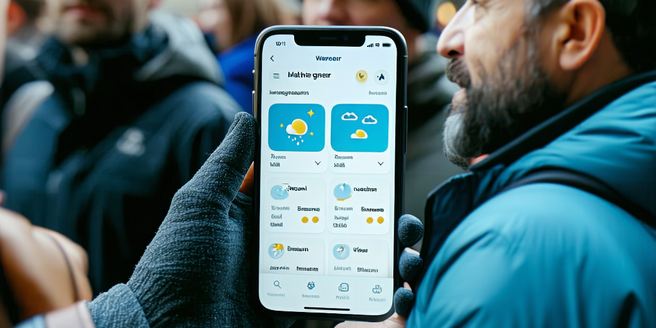
The Importance of Multi-Lingual Weather Apps
In today’s globalized world, weather apps must cater to a wide audience, transcending language barriers to provide accurate and accessible information. Multi-lingual support ensures that users from different linguistic backgrounds can access vital weather updates in their preferred language, enhancing user experience and increasing engagement. Furthermore, offering translations for technical weather terms can further improve understanding and reduce confusion among users. In addition to linguistic support, intuitive user interface design plays a crucial role in making weather apps user-friendly and efficient for people from all walks of life. By supporting multiple languages, weather apps can reach a broader audience, build user trust, and cater to the diverse needs of a multicultural user base. This is particularly important in emergency situations, where timely and comprehensible weather alerts in native languages could potentially save lives.
Top Features to Look for in a Weather App
When choosing a weather app, several key features can enhance the overall user experience. Besides accurate and timely weather updates, features such as radar imagery, extended forecasts, severe weather alerts, and location-based personalization are crucial. It is also important to consider the reliability and battery usage of the app for optimal performance. Additionally, user-friendly interfaces and customizable notifications play significant roles. Reading user reviews can provide insights into the app’s real-world functionality. Another vital aspect is multi-lingual support, allowing users to receive updates in their native language, thereby increasing accessibility. These features not only make the app more versatile but also ensure that users feel informed and prepared for any weather conditions.
How Language Support Enhances User Experience
Language support in weather apps enhances user experience by making the application more accessible and easier to use for non-native speakers. It allows users to navigate the app, understand forecasts, and receive alerts in their preferred language, thus reducing misunderstandings and promoting inclusivity. Moreover, tailored language options can significantly improve the accuracy of communication. Providing multiple language choices can also help break down cultural barriers, making the app more universally appealing. This customization fosters a sense of belonging and engagement, as users feel that their linguistic preferences are recognized and respected. By investing in language localization, app developers can improve satisfaction rates, attract a broader audience, and increase retention, ultimately leading to a more successful product.
Challenges in Developing Multi-Lingual Weather Apps
Developing multi-lingual weather apps comes with several challenges, such as ensuring accurate translations and maintaining contextual relevance across different languages. Moreover, user feedback plays a critical role in refining the app’s language features. Additionally, developers need to conduct thorough testing to identify and address linguistic nuances. Technical issues, like integrating language packs and handling varying text lengths, can complicate the development process. It’s important for developers to collaborate with native speakers to enhance the app’s language accuracy. Moreover, cultural differences might require localized content adaptations beyond straightforward translation. Developers must also consider real-time updates in multiple languages, requiring a robust backend infrastructure. These challenges necessitate specialized resources and increased investment, but overcoming them is essential to deliver a truly inclusive and effective weather app.
Future Trends in Language Support for Weather Apps
As technology advances, the future of language support in weather apps looks promising. Emerging trends include the use of AI and machine learning for real-time translation, thereby reducing latency and translating complex meteorological data accurately. One of the key benefits is the potential to break down language barriers for millions of users worldwide. This advancement could lead to more personalized and user-friendly experiences across different regions. Voice recognition and chatbots offer interactive ways for users to engage with apps in their preferred languages. Furthermore, community-driven language contributions could expand language offerings rapidly. As globalization continues, the demand for enhanced language support will likely grow, encouraging developers to innovate and prioritize accessibility, paving the way for a more inclusive digital landscape.
